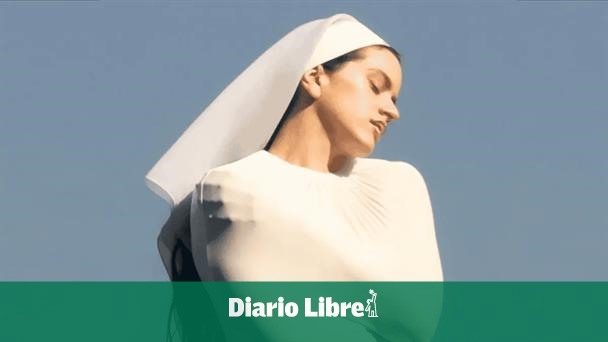Three versions of "The Seagull" in Buenos Aires: what makes this Chekhov play continue to fascinate us?

If Hamlet is the quintessential play, the epitome of the human condition, and if its name is synonymous with imagining a play, then Anton Chekhov 's The Seagull likely comes in second. This position could be debated among other great totems of theatrical literature, such as Federico García Lorca's The House of Bernarda Alba , Henrik Ibsen's A Doll's House , and Samuel Beckett's Waiting for Godot . But there is no doubt that these works define a powerful symbolic capital of what it means to bring a great classic to the stage.
This remarkable Russian writer, who died at the age of 44 from tuberculosis, managed in his short life to synthesize a way of being in the world of his time , without being confined to any specific movement. He was so innovative that his stories required the development of a new acting method to find truth in the way his words were spoken, and that's where the Moscow Art Theatre came in, with the figure of director Konstantin Stanislavski and his groundbreaking acting method.
Some will place Chekhov within the realm of realism, others will see him as far more symbolic. His vital force, his enormous contemporaneity, lies precisely in the fact that his work cannot be encapsulated in any single analogy. In The Seagull , one always discovers something new, a different perspective, and a warning about the future, latent in a text cast into the world at the end of the 19th century.
 Muriel Santa Ana and Rubén Szuchmacher, actress and director of "La Gaviota" at the San Martín Theatre. Photo: Carlos Furman/TSM
Muriel Santa Ana and Rubén Szuchmacher, actress and director of "La Gaviota" at the San Martín Theatre. Photo: Carlos Furman/TSMSo powerful and modern that there are now three productions of The Seagull playing in Buenos Aires. In addition to the intimate and innovative staging that director Guillermo Cacace premiered in 2023 and which is still running after touring the world and even performing in Moscow, there are two other shows: in the independent circuit, there's a version by director Carlos Scornik , who founded a company dedicated to researching and staging Chekhov 's plays; and in the legendary Casacuberta Hall of the San Martín Theatre, renowned director Rubén Szuchmacher presented his own version, with actress Muriel Santa Ana in one of the leading roles. What is there left for us to discover about this play?
“Many aspects of The Seagull resonate in the present day, but if I had to choose one, the strongest resonance I find is in its cynicism. That is, in the behavior of someone who, aware of the destructive nature of their actions, relaxes into the complicity of 'feigning ignorance.' The mastery lies in revealing these behaviors without moralizing, without any intellectual indoctrination, inviting us to explore the complexity of the plots where this unfolds, a complexity that can be unsettling to inhabit,” says Cacace , who rehearsed his play before the pandemic, envisioning a stage production in the Italian style.
But faced with widespread confinement and the impossibility of seeing each other, a need for closeness with the audience arose, which became the driving force behind the project: 24 people sit with the actresses (all women) around a table, share wine, and the story unfolds: “The renunciation of the previous was simply surrendering to the evidence of what is to come. That which is unsought and moves you through what it reveals. There is a permission to not inhibit a level of lacerating emotion that the actresses' bodies have always offered me, by not leaving the dissatisfaction or pain on a merely enunciative plane,” she adds.
 "The Seagull", directed by Guillermo Cacace, at Apacheta Sala Estudio.
"The Seagull", directed by Guillermo Cacace, at Apacheta Sala Estudio.In contrast to this production, the play directed by Rubén Szuchmacher at the Teatro San Martín, in a 500-seat auditorium, emphasizes the symbolist, almost impressionistic, perspective present in the source material. Jorge Ferrari's set design incorporates the material elements of this Russian landscape: the wood of the desk, the design of the chairs, and the backdrop of a rural scene with autumn leaves, which resembles a painting merging with the simplicity of a stage plank and a pastel-colored curtain that seems to float amidst nature. The staging is both subtle and exquisite.
“ The Seagull is a work I’ve worked on my whole life, but I never knew it as I do now. It’s a work about literature, not about human passions. Or at most, it has to do with love, but the channel is literature,” Szuchmacher maintains, and begins to cite the numerous examples in which the characters quote works and texts by other writers, and even phrases that are present in Chekhov’s stories.
Furthermore, the play explores the aesthetic debate surrounding new forms: “Life shouldn't be painted as it is, or as it should be. It should be painted as we see it,” says Kostia, and the discussion takes on a passionate quality in some scenes, transcending mere interpersonal relationships. “I'm more talented than all of you, if you want to know,” the son tells his mother. “You routine-bound types, who have appropriated the top spots in art and consider only what you do legitimate and authentic, crushing and suffocating everything else. I don't recognize you.” To this, the great actress replies: “Decadent! Go back to your beloved theater and continue making those lamentable, mediocre plays. I never acted in plays like that, leave me alone. You're not even capable of writing a pathetic vaudeville. You little bourgeois from Kiev, you parasite, you miserable, raggedy wretch.”
 "The Seagull", in the version by Carlos Scornik, in the Actors' Courtyard.
"The Seagull", in the version by Carlos Scornik, in the Actors' Courtyard.Szuchmacher quotes this scene and states: “The times I’ve argued with my mother, she never said those things to me. I think that’s not how a mother and son argue, in a more traditional way. There’s an aesthetic discussion. Of course, there’s a tension there, which has to do with love.” Muriel Santa Ana plays this selfish and arrogant woman whom Chekhov chose as the great artist of his play, and her performance is one of the highlights of this production—magnetic and authoritarian, without ever losing the constant humor that permeates the piece.
In the Patio de Actores (Actors' Courtyard), director Carlos Scornik presents a minimalist staging with eight chairs, a table, and a projection screen, though the actors' bodies take center stage. “ The Seagull is relevant because it speaks of love. Especially unrequited love, a universal theme for humankind to this day. It also speaks of a world of characters connected to the arts (writers and actors) and of the success and failure that accompany us artists today. And it moves us with its message and encourages us to keep going.” This spirit is encapsulated for the director in a line spoken by Nina in the play's fourth act: “We must persevere. When I think about my vocation, I'm not afraid of life.”
* La Gaviota , directed by Carlos Scornik, is presented on Fridays at 10:30 p.m. in the Patio de Actores, Lerma 568.
* La Gaviota , directed by Guillermo Cacace, is presented on Mondays at 8:30 p.m. and Saturdays at 8 p.m. at Apacheta Sala Estudio, Finochietto 487.
* The Seagull , directed by Rubén Szuchmacher, is presented from Wednesday to Saturday, at 8:30 p.m., and on Sundays, at 7:30 p.m., in the Casacuberta Hall of the San Martín Theater, Corrientes 1530.
Clarin





